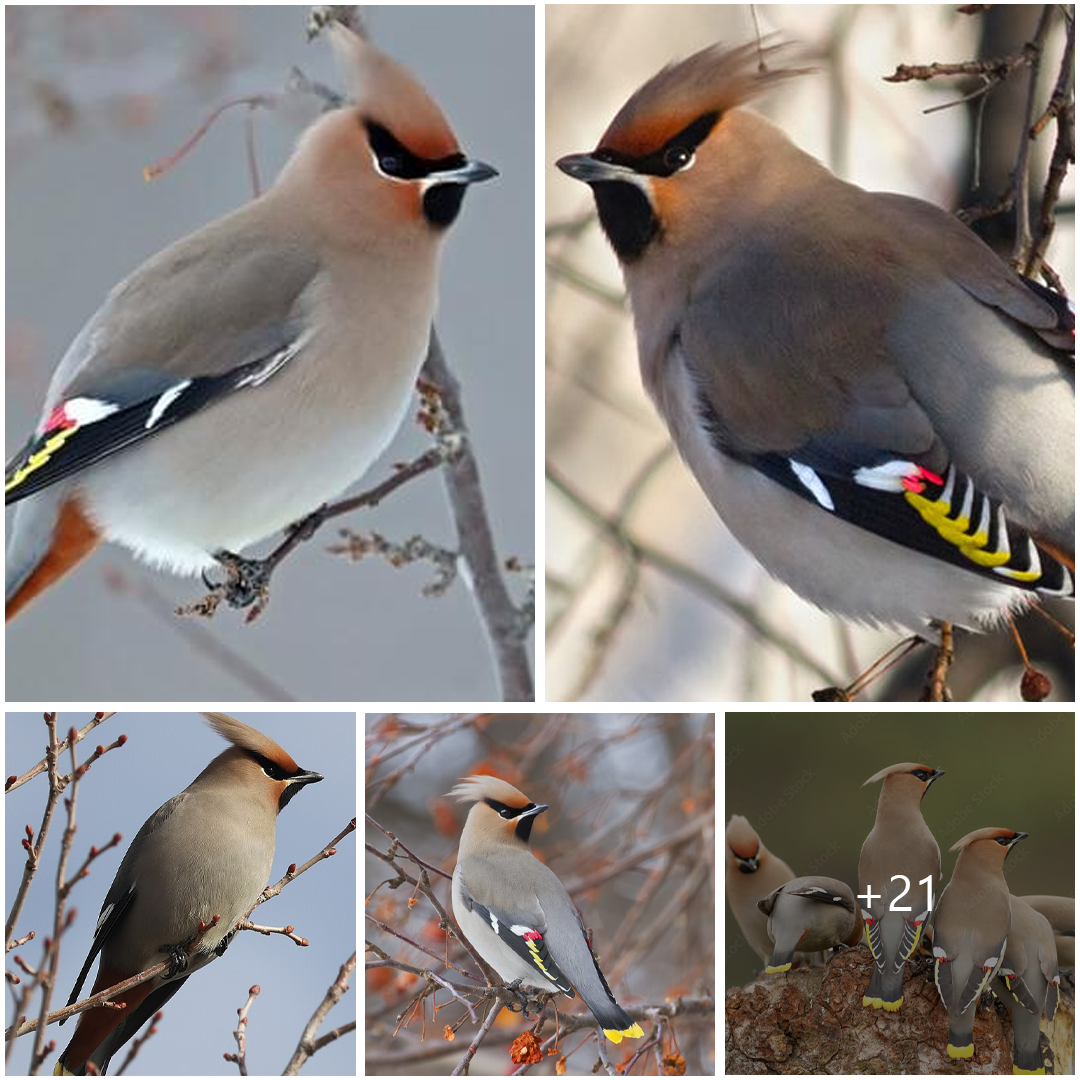
Bohemian Waxwing: A Stunning Sight in Nature’s Tapestry
The Bohemian Waxwing, a captivating avian species, graces the skies with its elegant presence and distinctive features. Let’s delve into the enchanting world of this remarkable bird and uncover what makes it a true marvel of nature.
1. Striking Appearance: The Bohemian Waxwing, known scientifically as Bombycilla garrulus, is renowned for its striking appearance and unique coloration. Sporting a soft, silky plumage of grayish-brown tones, highlighted by vibrant accents of yellow on its wings and tail, this bird cuts a mesmerizing figure against the backdrop of its natural habitat. Its sleek crest and sleek, pointed bill add to its allure, making it a sight to behold for birdwatchers and nature enthusiasts alike.
2. Migratory Habits: The Bohemian Waxwing is a highly migratory species, embarking on extensive journeys across vast distances in search of suitable breeding grounds and food sources. During the winter months, large flocks of these birds can be observed in various regions, particularly in boreal forests and open woodlands across North America, Europe, and Asia. Their nomadic lifestyle and synchronized movements add an element of mystery to their behavior, captivating observers with their coordinated flights and melodious calls.
3. Dietary Preferences: One of the defining characteristics of the Bohemian Waxwing is its specialized diet, which primarily consists of berries and fruit. Flocks of these birds are often drawn to areas abundant in berry-bearing trees and shrubs, where they feast on a variety of fruits such as mountain ash, hawthorn, and juniper. Their voracious appetite for berries plays a crucial role in seed dispersal and ecosystem dynamics, contributing to the regeneration of plant species and the overall health of their habitats.
4. Social Behavior: Bohemian Waxwings are highly social birds, often forming large, cohesive flocks during the winter months. Their gregarious nature is evident in their synchronized movements and communal roosting behavior, where they congregate in dense clusters to rest and socialize. These gatherings serve not only as a means of protection against predators but also as opportunities for individuals to establish social bonds and engage in courtship displays.
5. Conservation Status: While the Bohemian Waxwing is currently listed as a species of least concern on the International Union for Conservation of Nature (IUCN) Red List, certain populations may face localized threats due to habitat loss, climate change, and other environmental factors. Conservation efforts focused on preserving critical habitats, promoting sustainable land management practices, and raising awareness about the importance of biodiversity are essential for safeguarding the long-term survival of this iconic species.
In summary, the Bohemian Waxwing stands as a testament to the beauty and resilience of nature, captivating observers with its striking appearance, migratory habits, and social behavior. As we continue to appreciate and protect the rich tapestry of life on our planet, let us cherish the presence of these magnificent birds and strive to ensure a future where they can thrive in harmony with their natural surroundings.





